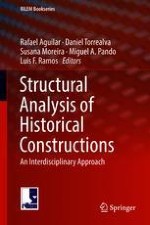2019 | OriginalPaper | Chapter
Cultural Significance: Linking Actors and Methods
Authors : Gabriela García, Jorge Amaya, Alicia Tenze
Published in: Structural Analysis of Historical Constructions
Publisher: Springer International Publishing
Activate our intelligent search to find suitable subject content or patents.
Select sections of text to find matching patents with Artificial Intelligence. powered by
Select sections of text to find additional relevant content using AI-assisted search. powered by
